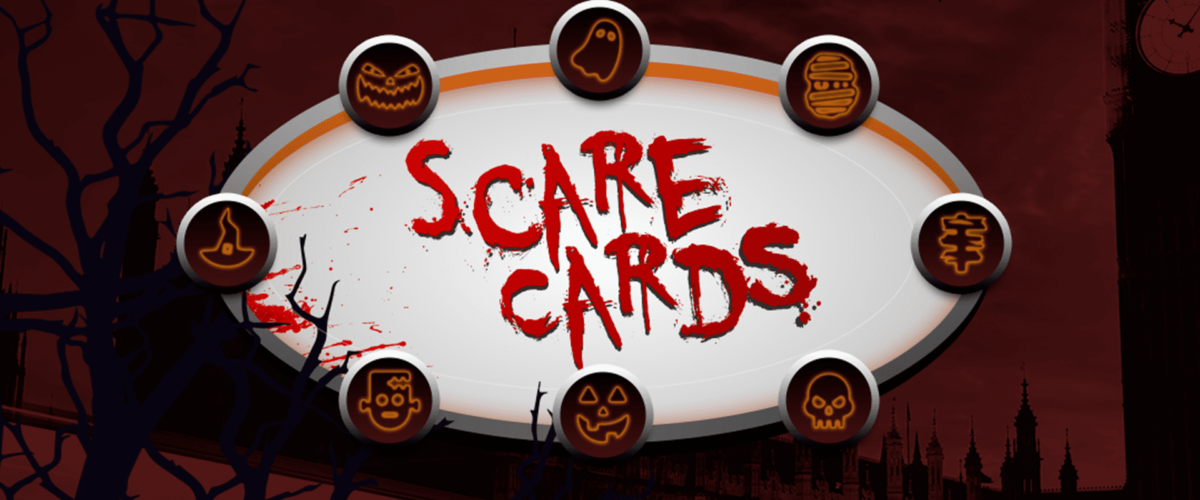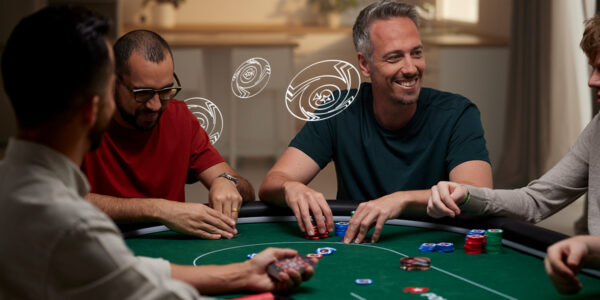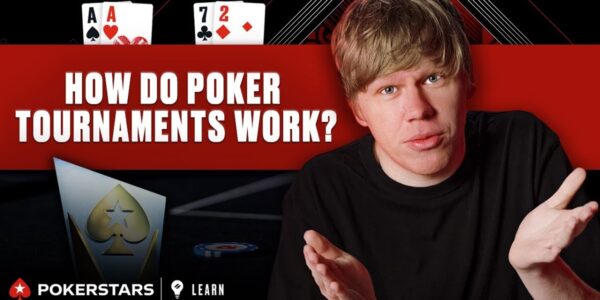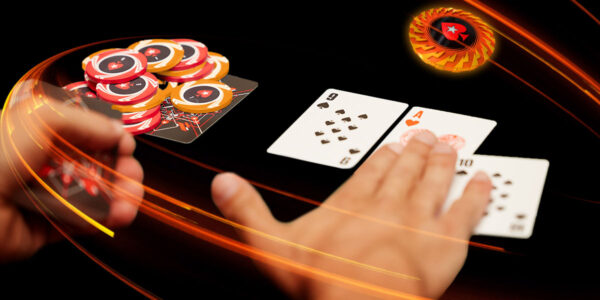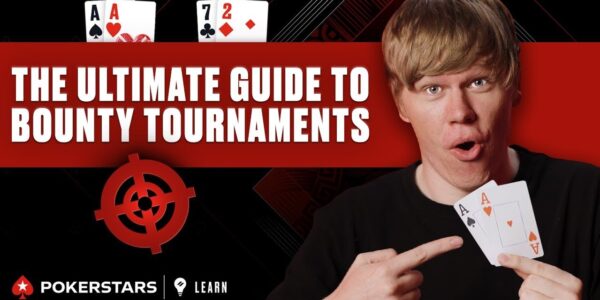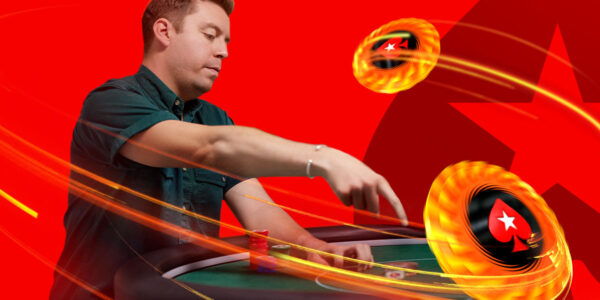Don’t Let the Cards Scare You!
We tried to think about what’s scary in poker, and nothing is scarier than a good scare card on the river. So what exactly is a scare card in poker? Essentially, a scare card is a card that radically changes the strength of your range, your opponents range, or both. Let’s look at a couple examples, and talk about how the appearance of the scare card should impact our decision making.
Let’s say a player has raised preflop, and we’ve called on the button with 55. It’s heads up to the flop, and it comes Q♣ 8♥ 5♥ . Our opponent continuation bets and we raise, with them calling. The turn is the 6♥ . They check, we bet, and they call. The river comes the 7♥ , making the final board Q♣ 8♥ 5♥ 6♥ 7♥ . If you already could guess what the river card would be in this example, then you are familiar with the scare card concept! The opponent checks to us one more time. How should this river scare card impact our decision?
When we raised on the flop, our plan was undoubtedly to continue betting for value all the way through if called. How should this river scare card change our decision?
Let’s start with our opponent’s range, and how this run out has impacted it. They raised preflop, c-bet and called our raise. They may have some flush draws like A♥ K♥ , A♥ J♥ , and the like. They may have some top pairs like AQ, KQ, or even both like A♥ Q♥ . And of course the overpairs of AA or KK are possible as well. A set of queens is possible as well, but the lion’s share of our opponent’s range is worse hands we are getting value from. On the turn we should be feeling pretty good, a set of Q’s or the flush would probably raise us, and yet they’ve called. So they are likely to have a lot of good one-pair hands, top pair and the overpairs. Now the scare card hits the river, and they have checked to us. The river brings 4 to a straight, and 4 to a flush. The way this river card has impacted our opponents range, is to either make it really weak (still one pair) or really strong (if their top pair or over pair made a flush, it’s a big flush). Our plan to value bet all the way now needs to be revised. If we bet again, it’s quite unlikely we will get called by all the one pair hands that did not make a flush. We will however be called by all the flushes they made, which all beat us. So there is no real value in betting anymore, and the prudent play is to check and showdown our hand, hoping they don’t hold a heart.
Let’s take another example. We’ve called a raise with 8♣ 7♣ from the blinds, and the flop comes 5♥ 6♥ 2♠ , giving us a straight draw. We check/call the flop to see a 10♦ turn. Again we check/call, and now the river comes the A♥ . Our opponent has raised preflop and bet both the flop and turn, so we expect they have a lot of overpairs to the flop in this scenario. This river is a great scare card to their range! Not only is it an over card to all those pairs except AA specifically, but it’s the most scary over card (as many players call along with a pair+ace kicker or even ace high), and it completes the most obvious draw, the flush draw, which our opponent must be concerned about. This might be a nice spot for a big bet as a bluff… we can’t win by checking with 8 high, but we can legitimately represent that this scare card has helped improve us to the best hand (in fact it often will as we do have some hands in our range like A6, A5, and 2 heart holdings like Q♥ J♥ etc).


Finally, let’s look at one last example from a common scenario we all face. We have raised preflop with QQ and the big blind has called. The flop comes T83 rainbow, and we cbet which they check/call. The turn pairs the 3, and again the action goes check, bet, call. The river comes a King and they check to us one last time. Many times inexperienced players will check and show down their QQ in this spot because they view the king as a scare card. Is it really though? True, it’s an over card to our pair. But again if we examine our opponent’s range, how many hands should they hold that the king improves? The straight draws have all missed, J9/97/QJ/Q9 type hands. The opponent also holds a fair bit of pairs. They probably do not have JJ or higher as they just called our preflop raise, and would have 3-bet preflop at least some of the time with big pairs. They should have a fair bit of top pair hands, Tx. Also some 8x, and maybe some smaller pairs that were hoping we just have ace high. The only hands in this range that were behind on the turn, but improve on the king river to beat us, are KT and K8 specifically. And they may not even call a raise with K8 off suit preflop. So while on the surface the king is a “scare card” for our QQ, in reality it’s not all that scary, and some sort of river value bet is probably in order.
The general idea behind scare cards is that they make the board itself more frightening to our holding. But it’s important to remember, a scare card that has not improved our opponent, is just as scary to them as it may be to us. So I will challenge you going forward to consider the “scare card” in relation to both your range and your opponents range… does it significantly change either one? If so, does that warrant a change in your action? By understanding the scare card and its impact on the ranges, like taking off the Halloween mask, makes what’s underneath a lot less scary.


